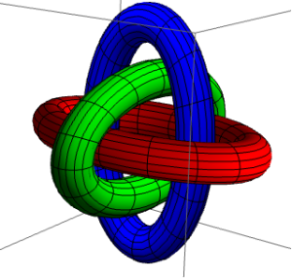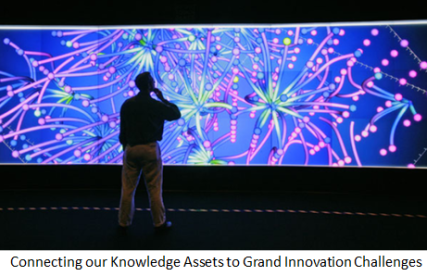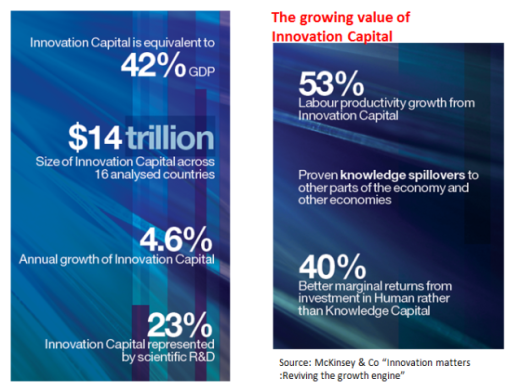 “The world has never been as complex, dynamic and uncertain as it is today and the pace of change will only increase.”
“The world has never been as complex, dynamic and uncertain as it is today and the pace of change will only increase.”We hear this consistently, our continual problem is trying to make sense of it.
Building Your Innovation Intelligence
Bringing my thinking and solutions to your problems
 “The world has never been as complex, dynamic and uncertain as it is today and the pace of change will only increase.”
“The world has never been as complex, dynamic and uncertain as it is today and the pace of change will only increase.”
How often do you pause for thought, testing yourself, questioning even simply for ‘just those few minutes,’ to allow yourself to openly challenge where you are and what you are attempting to do?
We keep relentlessly moving on, like a wandering herd of buffalo, always looking for fresh pasture, those new feeding grounds. It’s not good.
Of course, I often get caught up in this restless pursuit of gathering more, when I spend a growing amount of my time researching innovation. I keep coming across so many things that ‘trigger’ the thinking, pushing me on.
Do you let them go, ignore them, quickly pass over them, or attempt to capture the issue as something well worth investigating further at a later stage, or just get them simply behind you in the here and now.
Continue reading “Walkabouts are needed for learning and testing ourselves”
 I have been totally struck by the overwhelming number of webinars being offered to me on a daily basis, all related to innovation and all free.
I have been totally struck by the overwhelming number of webinars being offered to me on a daily basis, all related to innovation and all free.
Am I the only one getting overwhelmed in choice, underwhelmed in content value?
This is a bit of a long rant, so turn away now those who love all the free choices you currently have, don’t waste your time reading on.
Those a little more curious, as my friend Michael Fruhling always says in his useful blog “then read on, dear friends….”
What do you get of real value when it is offered free?
Continue reading “Tuning out, a need for simplification and better value”
 A little while back I was reading somewhere an academic paper and it triggered a thought on interlocking platforms for innovation, so I set about capturing it for this post, and then it somehow got filed away.
A little while back I was reading somewhere an academic paper and it triggered a thought on interlocking platforms for innovation, so I set about capturing it for this post, and then it somehow got filed away.
So this is the reworked opening thought to record the idea to ‘capture’ it, so I can reflect later on, on how I should build on this further. I show a number of hyperlinks to help in pulling this together…..well for me anyway!
So this is a work-in-progress and should be taken as a thinking out loud at this stage.
Linking capability through interlocking platforms
We are in need of a different “sustaining” capacity build around innovation as its continuous core, constantly evolving, adapting, learning and adjusting, in perpetual motion.
How? Innovation has many ‘touch points, a myriad of dimensions that need to be aligned and integrated. How can we achieve this more holistic view, so innovation management can make a significant advancement on where we are today?
Making the business case for innovation to change is not easy but essential
Continue reading “Building Innovation Capability Through Three Interlocking Platforms”
 Big Data is knocking very loudly on our door, how are you going to let it in and manage it?
Big Data is knocking very loudly on our door, how are you going to let it in and manage it?
How can we liberate that creative energy we have within our organizations, how can we achieve higher engagement?
How can we learn, share and transform the knowledge that is all around us, simply flooding in? How can we translate the data flowing in with the knowledge insights and innovation outcomes expected? How are we going to unleash the creativity that goes with new knowledge?
We need to actively encourage connected minds for value-creating opportunities and knowledge sharing for innovation to flow right across the organization. All the raw data needs connected and engaged minds.
“For this, we need to think about installing a modern engagement platform that has the knowledge and learning as its beating heart”
Continue reading “We need the engagement platform for translating big data learning”
 We need to connect our knowledge and put these assets into solving grand challenges.
We need to connect our knowledge and put these assets into solving grand challenges.
Lets focus on the bigger picture here.
Developing our knowledge and then putting it to good use gives us the potential for securing a competitive position- that goes without saying, perhaps.
Living in Europe offers us enormous history, diversity and a constant respect for the make-up of its different cultures.
Europe is a very proud continent forged from this history of competitiveness but it is grappling with its place in the global world where others seem to have a greater present-day advantage.
Continue reading “The Real Race is to Invest in Knowledge Assets and Grand Innovation Challenges”

Following on from my last post of “Place your future bets- invest in Innovation Capital” which outlined the significant contribution innovation capital plays in our economic growth and value enhancement, let’s explore some more.
Let me offer some further thoughts on its value to really capture and understand, so we can measure it within our organizations.
We have the three components; of physical capital, knowledge capital and human capital that are the innovation-related assets, these make-up Innovation Capital.
I have been arguing that innovation capital draws from the core of intellectual capital and its suggested (and broadly recognized) components of human, structural and relational capitals or social capital.
I have previously discussed this converging up, as the ‘nesting effect’
Innovation capital needs assessing and measuring so we can understand the relationship between these innovation capitals (and their present and future potential) and organization performance. We need to know the innovation capital ‘stock’.
Why, well ‘stock’ can be ‘static’ and we need to make this more ‘dynamic’ so innovation can ‘flow’ from this constant renewing of our capitals and be transformed into new value.
Continue reading “Exploring the Value Of Your Innovation Capital”
 Recognizing the value of our innovation-related assets is where the smart money should go, and then we need to invest in innovation capital. To gain growth and improve productivity is through innovation. We need to translate knowledge into new values.
Recognizing the value of our innovation-related assets is where the smart money should go, and then we need to invest in innovation capital. To gain growth and improve productivity is through innovation. We need to translate knowledge into new values.
When you pause and consider the make-up of Innovation Capital you realize it makes such an economic contribution and in a report from McKinsey & Co, they have set about identifying this to produce the above summary, covering 16 countries, to understand the real value of this Innovation Capital.
These numbers are big and still don’t fully capture everything associated with innovation as much remains ‘hidden’ or ‘attached’ to other activities as well.
We need to shift our thinking on what makes up Innovation Capital
Continue reading “Place Your Future Bets – Invest In Innovation Capital”
We need to think about recognizing the ‘combining effects’ of four foundation pillars; of value creation (vc), business models (bm), intellectual capital assets (ica) and innovation capital (ic). It is the dynamics within the multiple combinations that will generate the future wealth creation we need.
We are in need of having a better understanding of the integrated value focal points of these four pillars combining, they need connecting so we can build the supporting structures and place the roof of need, our wealth creating one, to give us a new potential of harnessing our innate abilities to be creative. These four pillars offer perhaps a new core, a new transforming power, they make our activities connected and dynamic.
Organizations have been focused for far too long around the importance of financial capital. It determines and drives organizations destinies. We are caught in a constant focus upon our achieving a return on our (financial) capital as our measuring criteria. Organizations strive for improving their ROCE, RONA, IRR, EVA and a host of other financial measures.
As Clayton Christensen has been arguing the agenda of organizations begins and ends with the “search for numbers”. I think there is a time for changing this, we need to search for the knowledge that makes-up eventually the numbers.
There has been a distant voice for some time putting forward the need to appreciate and value the other capitals sitting within organizations. Much of the discussions have been housed under the term “intellectual capital” which denotes the sum of knowledge made up and contributed by our human assets, our organizational structures and our relationships that are developed.
These are the ‘capitals’ that transform into economic value through organization action. It is the financial capital that simply finances this.
Continue reading “Struggling with counting ALL the sums of our capital”